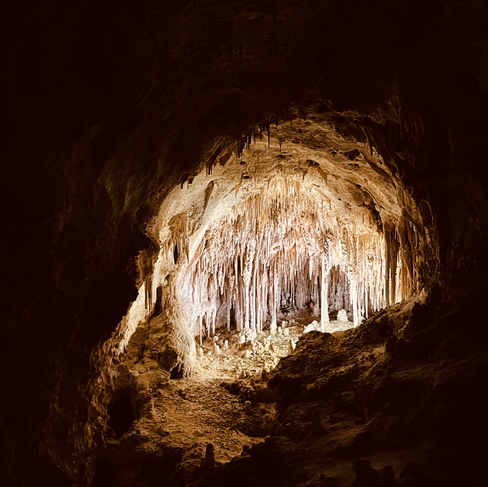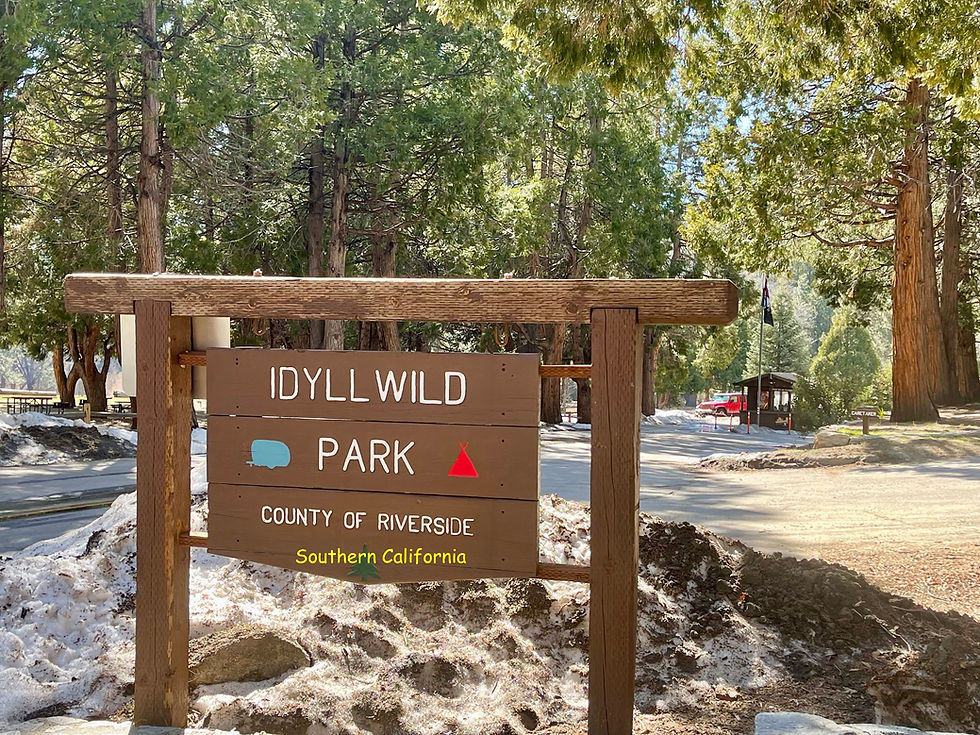New Mexico National Parks - Carlsbad Caverns and White Sands
- Sue.

- Dec 5, 2021
- 2 min read
We stayed in a "no frills" RV park in Carlsbad so that we could visit Carlsbad Caverns National Park. This was definitely a unique experience, so different from any of the other national parks we've visited. A reservation is required that is easy to get online. We checked in at the visitor center where there is an elevator that drops 800 feet into the caverns. The other choice is to hike 1.25 miles to the caverns thru the "Natural Entrance". This is where the first brave souls entered to explore the cave. After going thru the entrance and walking for a few minutes it was dark enough in places to need a flashlight. There is some lighting but it is dim. There is much to see on the way down. The trail goes by "Iceberg Rock", a 200,000 TON rock that crashed down from the ceiling thousands of years ago. Hmmmm, makes you think. At the bottom of the entrance trail there is a another marked trail that follows the periphery of the largest cavern which is called the "Big Room". This cavern is 8.2 acres and is filled with thousands of ornate formations. In one area the ceiling soars to 255 feet.
Almost everyone that hikes down the natural path takes the elevator back up. We didn't observe anyone hiking back up to the Natural Entrance. But we did it anyway. It was good exercise and we avoided the scary elevator ride.
None of the quarter million Brazilian Free-tailed bats were in residence when we visited. They live in the upper cave from early spring until October where they have babies (called pups) and shelter for the summer. The bats leave the cave in a mass exodus each day at dusk to feed on insects during the night. They return before dawn and the mother bats are able to locate their one pup using scent, location and the pup's cry. Amazing.
We drove to White Sands National Park from Elephant Butte. This Park has dazzling white sand dunes and is part of the largest gypsum dune field in the world. The entire dune field covers 275 square miles. The National Park protects more than half of this oasis, its shallow water supply and the plants and animals that live there.















































Comments